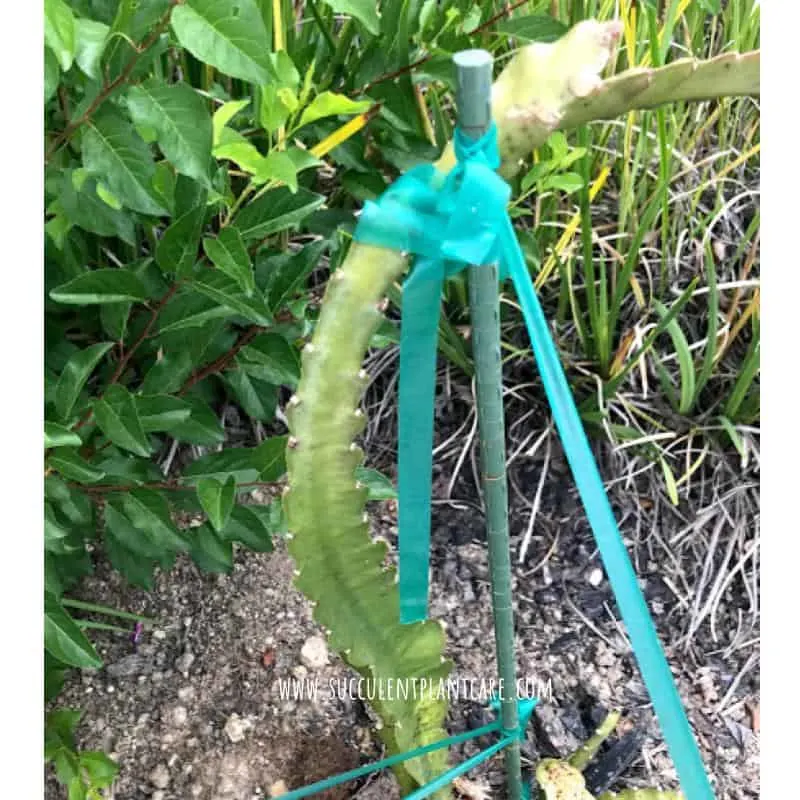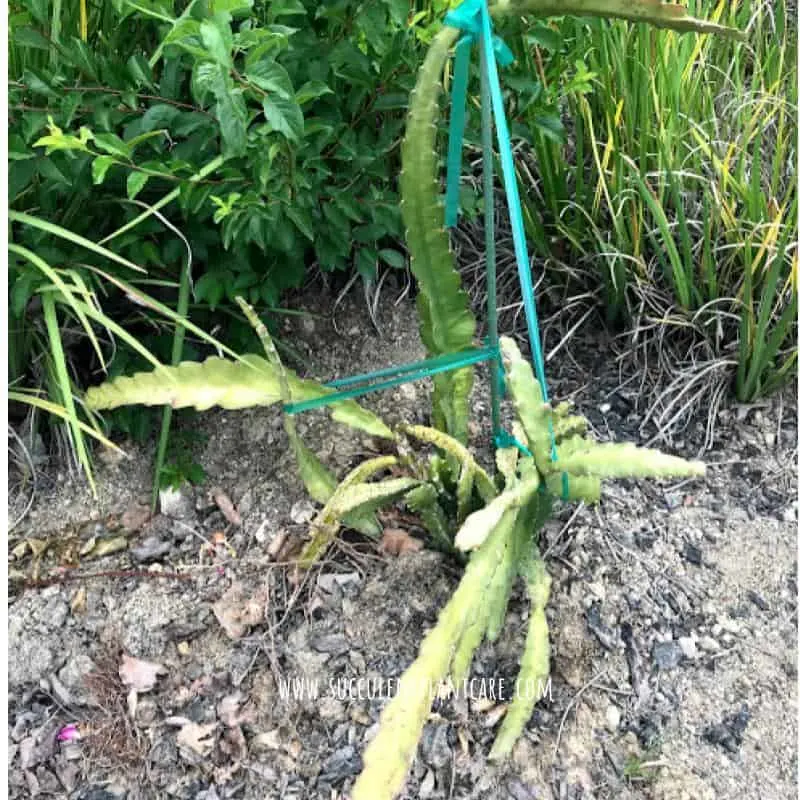Epiphyllum Oxypetalum ‘Queen Of The Night’ is one of the most largely cultivated epiphyllum species out there. It is native to Southern Mexico and a wide area in South America. Often grown as houseplants, these beautiful plants are mostly epiphytic, which means in its native habitat it grows on the surface of other plants.
Epiphytes are not parasitic plants, but rather, they derive nutrients and moisture from their surroundings such as the air and rainwater. Epiphyllum Oxypetalum is known for its fragrant, white flowers that can get quite large. The flowers’ most distinct characteristic is that they bloom only at night.

Other common names include ‘Orchid cactus’, ‘Dutchman’s pipe cactus’, and ‘Night blooming cereus’. These plants are commonly found in hanging baskets to give support to their long, branching stems.
Is it an Indoor or Outdoor Plant?
Epiphyllum Oxypetalum is mostly grown as an indoor plant but can also be grown outdoors if you prefer. For you to enjoy the sweet smelling flower of this cactus, you must provide it with the proper environment where it can thrive to its fullest.
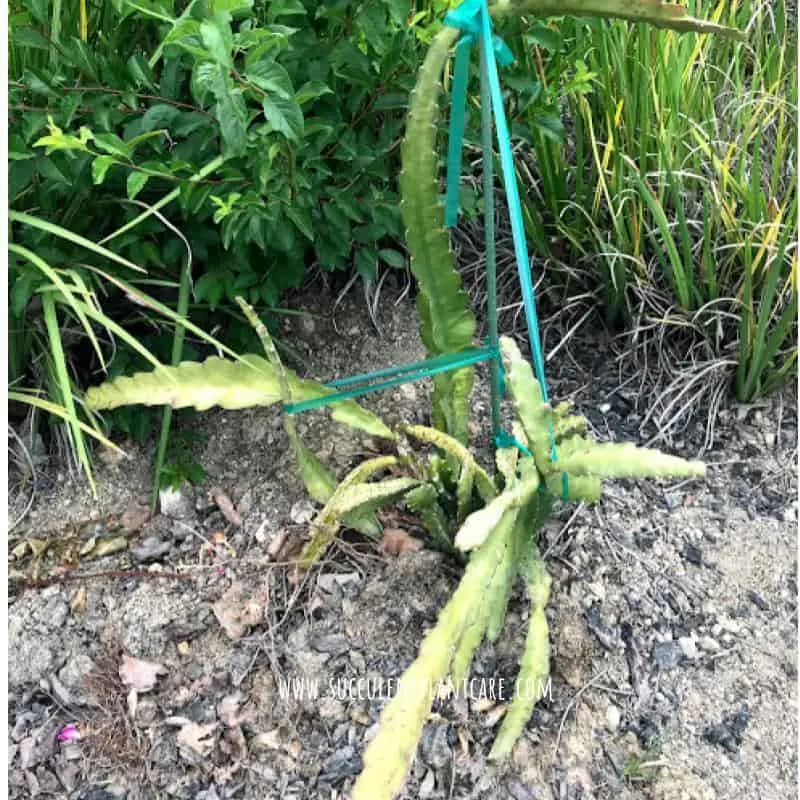
It is not a secret that this plant requires a bit of effort to maintain, but the reward of seeing the bloom is something that many gardeners covet. This is why it has become a staple in the indoor plant selection. Most experienced gardeners love to get their hand on this plant to experience the thrill of watching it bloom.
Hardiness Zone: The Epiphyllum Oxypetalum is hardiest in USDA Zones 10-11.
Indoor Lighting Requirements
You would need to place it in an area where it is bright but without direct sunlight. A window located in the south would be the perfect spot for this cactus. Although this is a part of the cactus family, it is really more of a tropical plant and temperatures of 100℉ (38℃) or above are not suitable for it. The optimum temperature that this plant should have is between 50 to 90℉ (10-32℃). A south-facing window will allow it to have about 6 hours of indirect sunlight that it needs without burning the plant.
Outdoor Sunlight Requirements
Outdoors could be a bit tricky to manage especially if you planted this in the ground. If it is in a container, all you need to do is move it a location that has indirect sunlight provided that it does not reach 100℉ (38℃). The ones that are planted on the ground will need some help in filtering the sun’s rays. You can use bed sheets, umbrellas or anything that can block the direct sunlight.
The best areas to plant this cactus on the ground are under tree canopies or under a shaded area of your garden. This will meet the bright but no direct sunlight requirement that this plant has. If you live in a climate with very hot summers as I do here in Northern California, you need to protect your plant from the intense afternoon sun especially in the summer months to prevent sun damage from the scorching afternoon sun. Here are some of my sunshade recommendations from my resource page if you need help in protecting your plants from the sun.
Frost Tolerance
Temperatures below 35℉ (1.7℃) can harm this plant. The potted ones can be brought inside the house but should be kept away from any vents or drafty windows that can be too extreme for the plant, even indoors. It is a good idea to bring the plant inside once the temperature drops to 40℉ (4.5℃).
The ones planted on the ground can be given cover during cold spells. You can an old blanket or frost cloths for this. Ensure that the cover does not touch the cactus by placing some support structure for the sheet or cloth. Put it over the cactus in the late afternoon and then remove it once again in the morning if it is located in a shaded area so the plant can get some sun during the day. Here are some of my frost protection recommendations from my resource page.
Soil Requirements
Unlike other cactus species, the Epiphyllum Oxypetalum needs a little more moisture in the soil. That is because in its native habitat, it grows in the rainforests where the climate is more humid and wetter than semi-arid desert regions. It is not recommended for the soil to dry out completely in between waterings.
A good draining potting soil should be perfect for this job. Your gardening store can help you identify which is the best mix for your cactus. You can make your own potting mix by combining equal parts peat moss and ground fir bark to create a base potting mixture.
Mix two parts of this base potting mix with one part of coarse builder’s sand (2:1). Mix the ingredients together until completely combined. You need to use coarse sand instead of fine sand. Fine sand can muddy up your potting soil mix and compact it, making it hard for the water to drain.
Another similar recipe is to mix two parts potting soil with one part perlite or pumice and 1 part orchid chips or fir bark per pot (2:1:1). The perlite will loosen up the potting soil enough so that water drains more quickly. These materials can be found in your local garden centers. You can also find them online.
Check out my resource page for soil and soil amendment recommendations. To read up more about soil and fertilizers for succulents and cacti, visit my post on “Best Soil and Fertilizers for Succulents and Cacti” for more detailed information on this topic.
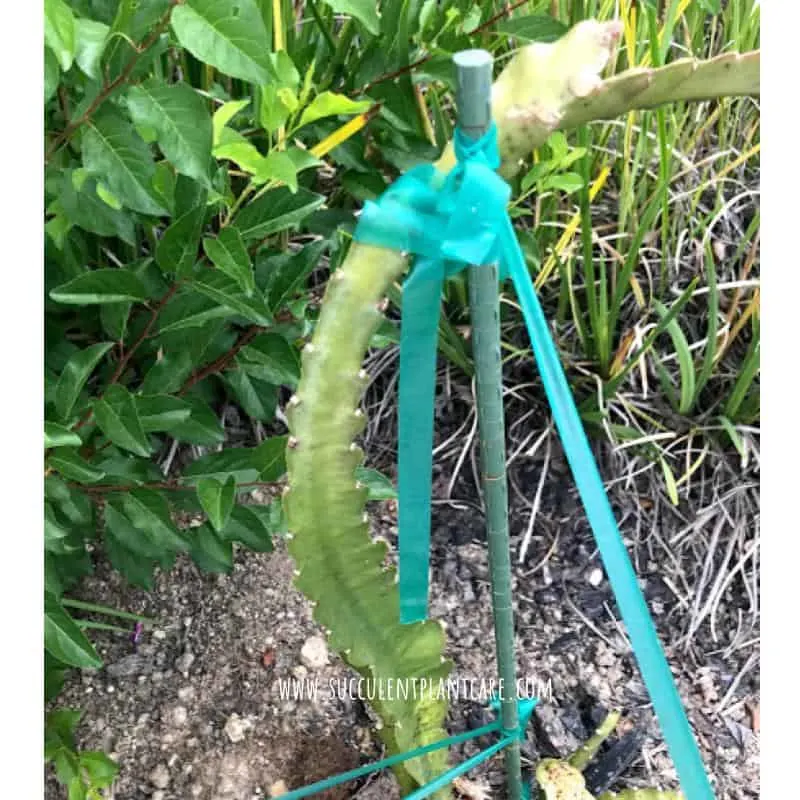
Epiphyllum Oxypetalum ‘Queen Of The Night’ leaves alone are very inconspicuous.
Watering Requirements
Do not wait until the soil of this plant is dry before you water it. It can damage the plant and prevent the roots from developing. Unlike desert cacti, these plants need to maintain a little moisture in the soil and will not tolerate being too dry for long periods of time.
Watering thoroughly will help the roots spread and grow properly. It is important that the soil is well draining so the plant is not sitting in wet soil which can promote root rot. In the summer months, water about once a week or more in areas with very hot and dry conditions.
It is better to choose pots with drainage holes to allow for excess water to drain out of the pot. Cut back on watering in the spring and fall season to about once every 10-14 days; and once every 2-3 weeks in the winter months. Mature plants need less water than younger plants.
If you live in a dry climate, you need to water this plant more to prevent the soil from drying out completely. Since this plant thrives better in more humid conditions, you can add humidity in the air by placing a saucer of water next to the plant during very hot and dry days, or in the winter time when the heat is running.
You can also use a humidifier to improve moisture levels in the room. You can check for humidity in the air and moisture levels in the soil by using a moisture meter. Here are some of my moisture meter and humidifier recommendations.
How to Propagate and Root the Epiphyllum Oxypetalum
The best and easiest way to propagate this plant is through leaf cuttings. Refer below for a step by step guide on how you can propagate and root the plant.
Step 1: Cut a few of the mature leaves of the cactus and store it in a cool, dry place. The cutting should be at least 4-6 inches (10-15cm) long. Let the cuttings dry for a few days until they form calluses. The calluses will protect the cuttings from rotting when planted.
Step 2: Optional: Dip in rooting hormone. While not necessary, rooting hormones can help speed up the rooting and propagation process.
Step 3: Prepare a well-draining potting soil. Refer to soil requirements above to make your own. Place the potting soil in a container with drain holes. Make sure the pot is not too big for the cuttings.
Step 4: Place the cuttings with the cut end in the soil. Keep away from direct sunlight.
Step 5: Water about once a week or whenever the soil feels dry.
Step 6: Leave the cuttings be until it forms roots. You can check if the roots are forming by giving your cuttings a slight tug. When you feel some resistance, it means that the roots are developing as planned. This should take anywhere from two weeks or more.
Step 7: Place the new plant in an area where it is bright but without direct sunlight or it will burn.
You do not need to repot this plant too often. Repotting is usually not necessary until a few years of being in the same pot. The plant likes to be pot bound which encourages blooms. After repotting, follow the same steps of letting the plant rest so that the disturbed roots have time to recover before resuming your regular watering schedule.
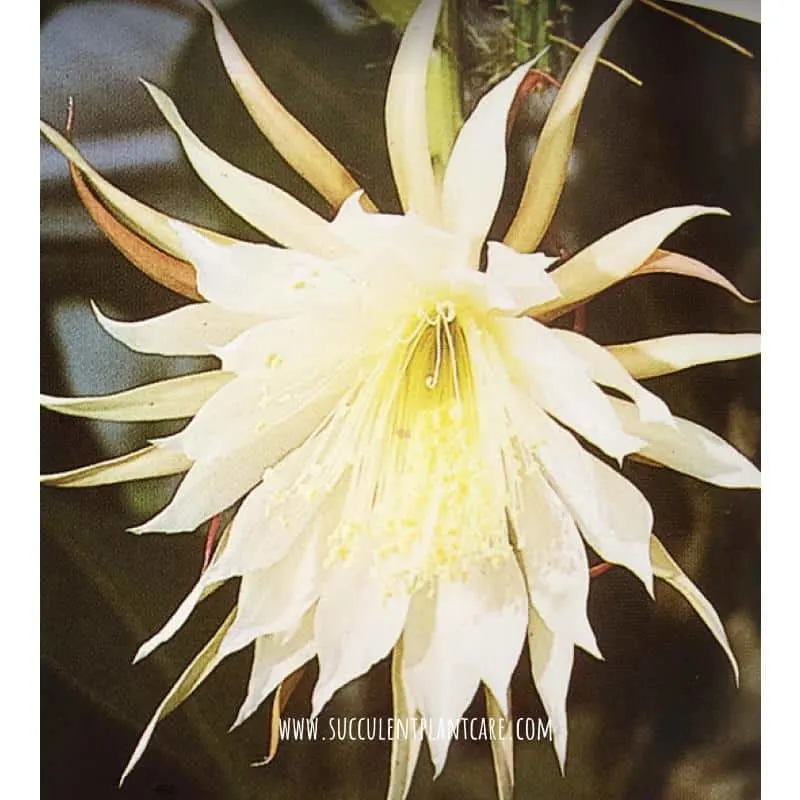
Blooms
The flower of this cactus is both beautiful and sweet smelling. You’d be one of the lucky ones if you are able to make your queen of the night bloom. In some cultures, the flowers are believed to hold medicinal value and are used to treat illnesses.
The white flower has a spider-like or star-shaped appearance with tinges of yellow sometimes. It is very fragrant and delicate looking with its 25-30 white linear petals. The flowers can be quite large and can grow up to 6 inches (15cm).
The flowers begin to open around 8 to 10 pm and reach full bloom at around 12 to 3 am then closes quickly before dawn. It can be tricky to catch it in full bloom which makes it the more special.
For the queen of the night to bloom, you must have a controlled environment for it and put in extra effort to keep it at the right temperature. The more pot bound the plant is, the more likely it is to bloom. To encourage blooms, the plant needs to go through a cooling process in the winter months. Keep the plants around 40℉ (4.5C) in the winter time.
In addition, you can feed the cactus with a fertilizer specifically designed for cacti once every two weeks to promote blooming during the spring and summer seasons. Here are some of my fertilizer recommendations for cacti. Keep in a bright location but away from direct sunlight. Follow the lighting, soil and watering requirements above and you may be rewarded with beautiful blooms.
Is the Plant Toxic or Poisonous?
There is no known source that says that this is a poisonous plant. In fact, tribes in the rainforest regions use the flowers as part of their healing rituals. They believed that this is the flower of the gods and therefore holds particular medicinal value.
The Epiphyllum Oxypetalum ‘Queen Of The Night’ may seem more challenging than other succulents and cacti out there, but this only adds to its appeal. In reality, these plants just have slightly different growing needs than other succulents and cacti. Once you take these into consideration, these plants are easy going and you may soon be rewarded with awesome night blooms.
Wondering where to find an Epiphyllum Oxypetalum? Visit my resource page for recommendations on where to purchase these and other succulents and cacti online.
Pin this to save for later or share with others now!
